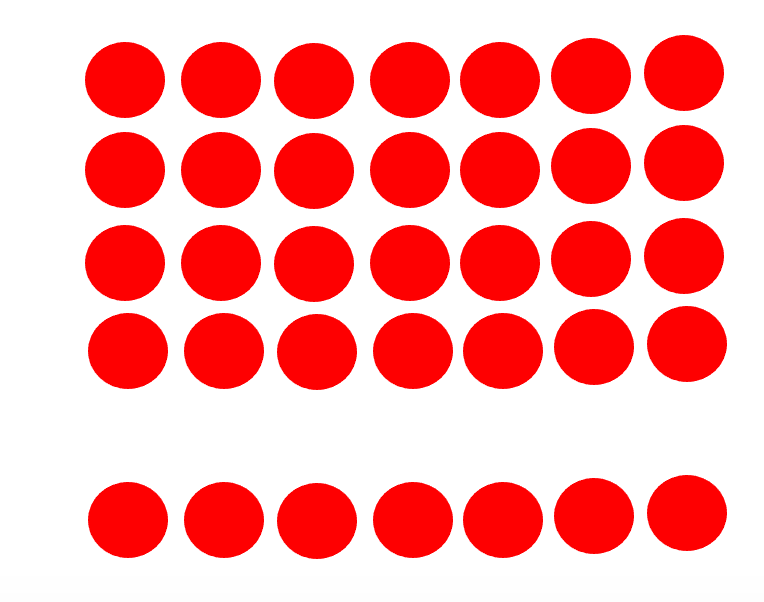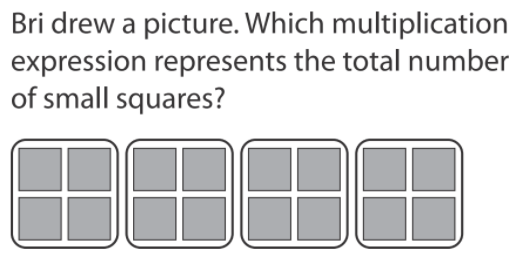
4 X 4

4 x 2 = 8
Noah can water 8 plants.
What is the name of the numbers being multiplied in a multiplication equation?
Factors
When you multiply a number by zero, the product is _______________ .
Zero
Write an expression for the following array using the distributive property. Include the product in your answer.
(4 x 7) + (1 x 7) = 35
What multiplication problem is being represented by the array? Include the product in your answer.

5 x 3 = 15
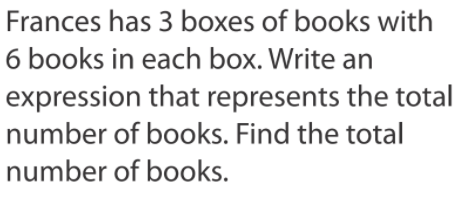
3 x 6 = 18
The total number of books is 18.
What is the answer to a multiplication problem called?
Product
When you multiply a number by 1, the product is the number being multiplied. What is the name of the property that tells us this?
Identity Property
Find the missing factor and the product
(4 x 3) x 2 = 4 x (__ x 2)
Missing factor: 3
Product: 24
What multiplication equation is being represented on the number line below? Include the product in your answer.
5 X 2 = 10

9 x 7 = 63
There are 63 tomato plants.
What is the mathematical term for breaking numbers apart?
What is the missing value?
8 x 7 = 7 x ____
8

7 x 6
What multiplication problem is being represented by the repeated addition problem below? What is the product?
10 X 6 = 60
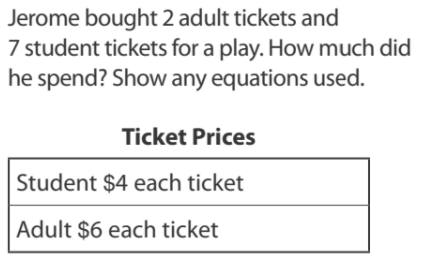
Jerome spent $40.
What term is used to describe the 80 and the 16 in this equation? HINT: two words
Partial Products
Create two arrays for the following equation. Use the commutative property to create the second array.
4 x 7

Find the missing factor and the product:
(10 x 5) x 2 = ___ x (5 x 2)
Missing Factor: 10
Product: 100
What multiplication problem is being represented by the following array? Include the product in your answer.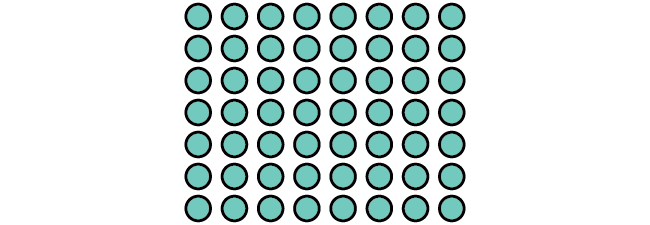
7 x 8 = 56

4 x 2 x 8 = 64
There are 64 bagels displayed.
What is a symbol used to represent an unknown amount called?
Variable
Easton says that you can use the commutative property to prove that 6 x 2 has the same product as 3 x 4. Is he correct? Why or why not?
Easton is not correct. The commutative property tells us that we can switch the order of the factors and still get the same product.
Solve the following problem by decomposing the 12 using the distributive property. Use friendly numbers.
12 x 9 =
(10 x 9) + (2 x 9) =
90 + 18 = 108
